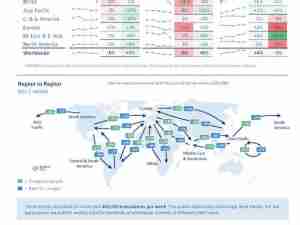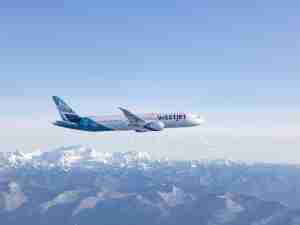Surging oil prices usually mean trouble for aviation executives in Asia, where spending on jet fuel can sometimes account for more than half of an airline’s operating costs.
So far at least, airline executives aren’t sweating it, thanks in large part to the region’s remarkable travel boom and steadily expanding passenger market, according to executives attending the biennial Singapore Airshow this week.
In markets such as India, China, Vietnam and Indonesia, so many new fliers are coming on stream every year that airlines aren’t having difficulty filling more than 90 percent of the seats in a plane. On top of that, a new generation of fuel-efficient aircraft from Airbus SE and Boeing Co. are also helping air carriers cope with spike in crude oil prices, they said.
“There’s a consensus that oil is still at an acceptable price,” Alexandre de Juniac, chief executive officer of the International Air Transport Association, a lobby group that represents 83 percent of global air traffic, said in an interview with Bloomberg TV Monday. “It’s more of an inflation trigger for fares.”
Brent, the global benchmark, has risen 30 percent in the past six months, touching its highest level in three years on Jan. 25, as producers persist with output cuts to counter a market glut. A slump in new supply outside the U.S. shale patch in 2019 could help send Brent crude briefly back above $100 a barrel next year, according to London-based industry consultant Energy Aspects.
“The airlines will start to get really worried if prices could rise more than $10 from the current levels,” said Rahul Kapoor, a Bloomberg Intelligence analyst in Singapore.
Fuel Efficiency
Planemakers have focused on building fuel-efficient aircraft like 787 Dreamliners and the A320neo, as airlines look to cut expenses even as fierce competition forces fares to stay low. The need for aircraft that consume less fuel has contributed to an uncertain future for giant, four-engine passenger aircraft like the Airbus A380 and Boeing 747.
“Believe it or not, these new aircraft are super efficient fuel-wise,” Alan Joyce, chief executive officer at Qantas Airways, said in an interview. For example, the 787, as fuel prices go up, is actually more competitive against the 747 and the A380, he said. “So we think it is a bit of a hedge to future movement on fuel prices as well.”
In Europe, low-cost giant Ryanair Holdings Plc is relying on Boeing’s 737 Max narrowbody—which it has nicknamed “the gamechanger”—to herald in its next wave of cost reductions and push fares down even lower, Chief Financial Officer Neil Sorahan told Bloomberg TV on Monday. The carrier has ordered 110 of these more fuel-efficient jets, with first delivery due in 2019.
Competition, Discounts
Higher oil prices typically result in higher airfares with a lag of about three months, but fierce competition in places like Southeast Asia and India mean airlines often have to offer discounts to lure passengers. Even in the U.S., carriers have tried and failed to raise fares, resulting in a confidence crisis for airline investors.
While crude oil prices have risen in the past six months, it’s still way off the peak of about $140 it reached a decade back.
“We did see losses and consolidation like in the U.S. and the E.U., but the show went on,” said Amber Dubey, the New Delhi-based head of aerospace and defense practice at KPMG.
“Given other non-fuel fixed expenses, anything up to $80 is comfortable. Beyond $80, we may see some inefficient airlines being bought out by healthier ones, but that’s a natural process.”
One big tailwind for airlines in Asia that will help them tide over the higher prices is the surge in passenger numbers. Economic growth in China, India and Southeast Asian nations has propelled a new class of fliers.
Asia Pacific is likely to have 3.5 billion passengers by 2036, adding more than double the forecast for North America and Europe combined, according to estimates by IATA. To meet that demand, Boeing estimates carriers will need 16,050 new aircraft valued at $2.5 trillion by 2036.
“We think that oil price is going to be range-bound at about $70 and that’s where we are right now,” said Dinesh Keskar, senior vice president of Boeing’s Asia Pacific and India sales, adding the level is still comfortable. “We continue to think that the market will bear it.”






